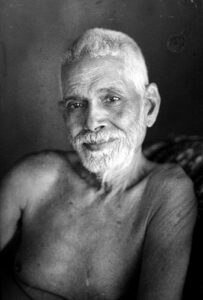Continued from introspection (svādhyāyam) 1.
What is introspection (svādhyāyam).
Introspection is a disciplined manner of reflecting the impact of any action on the Self. It requires the use of regression – working out the linkage between our action, our conditioning and it’s impact on our self. Consequently, we are able to understand the impact of our family, upbringing and family on our lives and decision making process. As a result, we are able to delve deeper into our psyche and increase our awareness of the various building blocks of our personality, thereby increasing jñāna (awareness of our sense of Self or identity). While this process is easy to learn, it is very difficult to sustain, as it means us having to confront many uncomfortable realities of ourselves.
How does introspection (svādhyāyam) translate to awareness of the Self.
While sthūla (gross) and sūkṣma (subtle) are micro aspects of introspection, the macro aspect of any entity (kṣetra) also needs to be cognised. This cognition (kṣetrajña) has two components;
- Vijñāna (Cognition of the macro-system): All entities have a centre of existence (raison d’etre). This dictates the structure, strategy, system, and decision-making drivers. As can be seen, this aspect would have both, a gross (sthūla) and subtle (sūkṣma). For example – an engine is placed both, in a truck and a tank. However, the functionality will vary depending on usage, so one will need to understand the gross (sthūla) as well as (sūkṣma) aspects of the two frames of use to completely cognise vijñāna (macro awareness) of that engine.
- Jñāna – jñāna is awareness of the Self. Self is that which drives all materiality and is called kāraṇa-śarīra (the causal base which drives the movement of consciousness (citta). Jñāna happens automatically when we act. Our actions bring experience. There is a learning. Where do the experience and learning go and reside? The brain, true. But what drives the electro-chemical modifications in the brain? That is called prāṇa (motility). However, prāṇa is inert and is only a motility factor, like petrol or diesel in an engine. This driver is the Self (ātmā) and cognition of this aspect is called jñāna.
This element is one of the most important aspects of increasing situational awareness (prajñā). While the basics are easy to learn, perfecting this aspect requires study and reflection on the subject (vivekam) and ability to detach oneself from the surroundings (vairāgyam) in order to comprehend subtleties of the situation and the impact on oneself.
Also, a key aspect of introspection is reflection (mimāmsa)
Reflection (mimāmsa): All stimuli lead to response and the transaction results in an experience. Therefore, the quality of the experience is dependent on our awareness of the situation (vijñāna) and awareness of the impact of the experience on our sense of identity (jñāna).
Consequently, when we review any situation, we always consider our present experience in personal terms (do I like this? How do I feel? Why am I anxious?). Finally, what we are actually doing is reflecting the impact of the experience on our Self. This is mimamsa (reflection) and is an element of introspection.
Ramana Maharishi – the mystic who mastered introspection.
Paul Brunton was a British philosopher and mystic. He left a journalistic career to study a variety of Eastern and Western esoteric teachings. Brunton felt charged with the task of communicating his experiences of inward and spiritual quest to others and to write accounts of what he learned in the East from a Western perspective. His works have had a major influence on the spread of Eastern mysticism to the West. In his book, A Search in Secret India, he outlines his search for a Guru or teacher and rejecting all for very rational reasons. Finally, he surrenders to Sri Ramana Maharishi and this surrender is not on logical terms.
- Can we surrender without logic?
- Is it possible to surrender to a concept or person?
- Brunton was able to present what he learned from the Orient in layman terms. He was primarily influenced by Sri Ramana Maharishi, who maintained that the purest form of his teachings was the powerful silence which radiated from his presence and quietened the minds of those attuned to it.
Some teachings of Sri Ramana on introspection:
- Of all the thoughts that rise in the mind, the thought ‘I’ is the first thought.
- That which rises in this body as ‘I’ is the mind, if one enquires ‘In which place in the body does the thought ‘I’ rise first?’
- Also, it will be known to be in the heart [spiritual heart is ‘two digits to the right from the centre of the chest’]. Therefore, even if one incessantly thinks ‘I’, ‘I’, it will lead to that place (Self)’
- The mind will subside only by means of the enquiry ‘Who am I?’ Consequently, the thought ‘Who am I?’ destroying all other thoughts, will itself finally be destroyed like the stick used for stirring the funeral pyre.
Points to Ponder on contentment (svādhyāyam).
Internal Tags: Karma, Dharma (conditioning), Stress and Situational Awareness, Stress and prana, Awareness measures, Bhakti Yoga fundamentals, Jnana Yoga, Karma Yoga, Hatha Yoga and Raja Yoga.
External Tags: Consciousness
- What happens when we accept our fate?
- How do we reconcile evidence with intuition?
- Is there any change in our awareness when we reflect on our sense of identity?
- What are the changes that our sense of identity experiences with each reflection? Is this static or does our awareness of identity change with each reflection?
- When does reflection result in a feeling of serenity or balance within us?
- How important is emotional stability in reflection?
- Does emotional stability change our sense of identity (jnana)?


